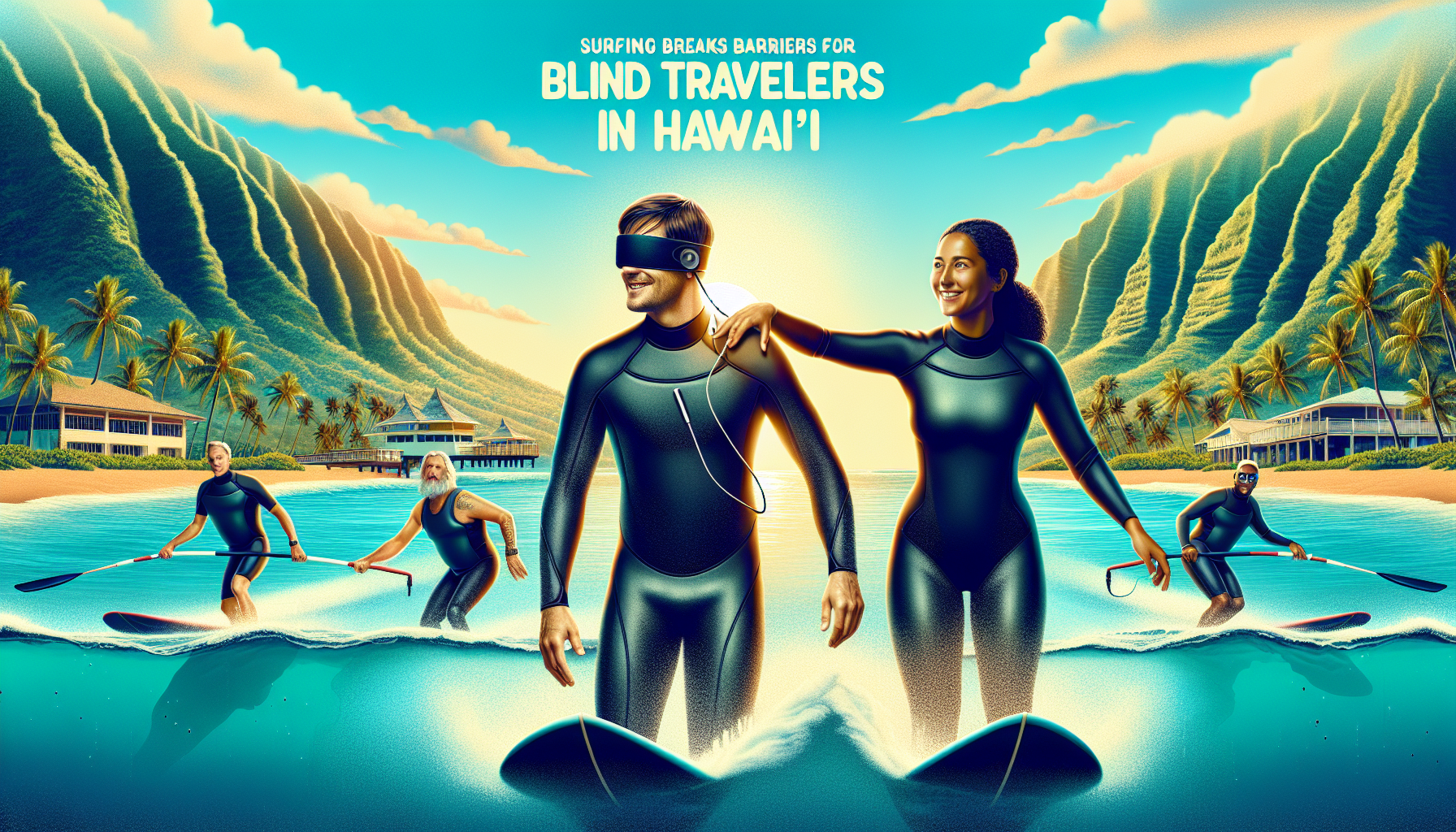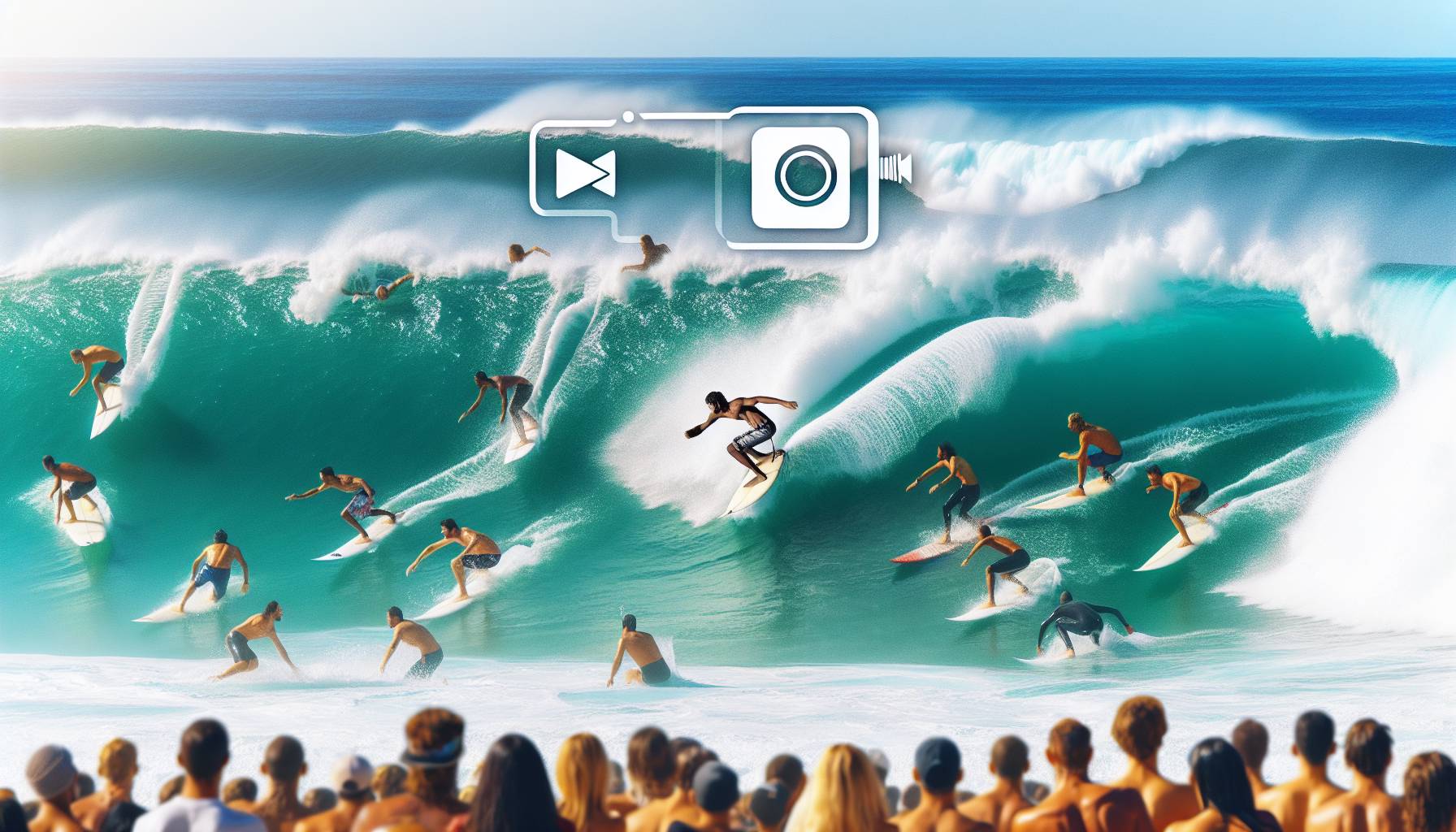
Riding the waves without sight
As the sun rose over the Pacific, the rhythmic sound of waves crashing against the shore served as both a guide and a challenge. For a blind traveler stepping onto the sands of Waikīkī Beach, the ocean was not just a vast expanse of water—it was an invitation to push boundaries. With the help of a local surf instructor trained in adaptive techniques, the traveler prepared to take on the waves, relying on verbal cues, tactile signals, and the feel of the board beneath their feet.
Surfing without sight demanded a heightened awareness of every sensation. The texture of the waxed board, the pull of the current, and the subtle shifts in balance became essential indicators. Each wave approached with a roar that signaled its size and speed, and the instructor’s voice cut through the wind, offering real-time guidance: “Paddle now! Left hand stronger! Pop up!”
Despite the initial uncertainty, the traveler quickly found a rhythm. The first successful ride brought a surge of exhilaration—an unfiltered moment of freedom and connection with the ocean. The cheers from the beach, the salty spray on the face, and the rush of gliding across the water created a sensory experience unlike any other.
For many surfers, the ocean is a place of clarity and escape. For someone navigating it without sight, it became a space of empowerment. Each session built confidence, not just in physical ability, but in the capacity to trust, adapt, and thrive. The surfboard became more than a tool—it was a vessel of independence, carrying its rider into a world where vision was replaced by instinct and courage.
A bond forged in the surf
From the very first paddle out, a unique connection began to form between the traveler and their surf instructor, a seasoned local who had spent years guiding surfers of all abilities through Hawai‘i’s iconic breaks. What started as a professional relationship quickly deepened into something more profound—an unspoken understanding forged through shared challenges and triumphs in the surf.
Each wave they caught together became a conversation without words. The instructor’s steady presence in the water, his calm voice cutting through the roar of the surf, and the subtle touch on the shoulder or tap on the board created a language of trust. In the unpredictable rhythm of the ocean, this bond became the traveler’s anchor. It wasn’t just about staying upright on the board—it was about knowing someone was there, attuned to every movement, ready to guide and support without hesitation.
Between sets, they floated side by side, swapping stories and laughter. The instructor shared tales of growing up on the island, of learning to surf as a child, and of the deep respect he held for the ocean. The traveler, in turn, spoke of the challenges of navigating the world without sight, and the freedom they felt in the water—where limitations seemed to dissolve with each wave.
It was during these quiet moments in the lineup that their friendship truly took shape. The ocean, with all its power and unpredictability, became a backdrop for connection. They began to anticipate each other’s movements, syncing their paddles and timing their takeoffs with an ease that surprised even them. The traveler’s confidence grew, not just from mastering the surf, but from the unwavering support of someone who believed in their ability to ride each wave on their own terms.
Locals on the beach began to notice the duo, cheering them on as they carved through the waves. What they saw wasn’t just a surfer and a guide—it was a partnership built on mutual respect, patience, and a shared love for the sea. In a place where the spirit of aloha runs deep, their bond stood as a testament to the power of human connection, especially when nurtured by the rhythm of the ocean.
Embracing aloha through adversity
Out in the surf, where the horizon blurs and the senses sharpen, the traveler encountered more than just the physical challenge of riding waves without sight—they faced moments of vulnerability, frustration, and fear. There were wipeouts that left them gasping for air, miscommunications that led to missed waves, and days when the ocean seemed less like a playground and more like a test. But it was in these moments of adversity that the true meaning of aloha revealed itself—not just as a greeting or a cultural symbol, but as a lived experience of compassion, resilience, and shared humanity.
Locals rallied around the traveler with a warmth that transcended words. Fellow surfers offered encouragement, shared tips, and even adjusted their own sessions to make space in the lineup. Beachgoers clapped after each ride, whether it ended in a triumphant stand or a tumble into the foam. The surf instructor, ever patient, adapted his teaching style with each session, finding new ways to communicate through touch, sound, and intuition. Their bond deepened not just through success, but through the quiet determination to keep trying, wave after wave.
In Hawaiian culture, the ocean is more than a body of water—it’s a living entity, a teacher, and a source of spiritual connection. The traveler came to understand this through experience. Each challenge in the surf became a lesson in humility and perseverance. The ocean didn’t offer guarantees, but it did reward those who approached it with respect and openness. And in return, the traveler gave themselves fully to the process, embracing the unknown with a courage that inspired everyone around them.
There were moments when the traveler stood on the board, arms outstretched, riding a wave with nothing but the sound of the surf and the feel of the wind to guide them. In those fleeting seconds, adversity melted away. What remained was pure presence—a connection to the ocean, to the people who supported them, and to a deeper part of themselves. It was in these moments that the spirit of aloha came alive, not as a concept, but as a force that carried them forward, wave after wave.
Riding the waves without sight
Out on the North Shore, the swell was pumping and the sun was blazing—classic Hawai‘i. But for this surfer, there was no horizon to scan, no sets to spot. Born blind, he relied on feel, sound, and instinct. And mate, he had plenty of all three.
With a local surf instructor guiding him, they paddled out together, side by side. The instructor would call out the timing, the angle, and when to pop up. It wasn’t just about catching waves—it was about syncing up like a well-oiled jet ski crew dodging a reef break.
“You don’t need sight to feel the wave,” he said. “You just need to trust it—and trust your mate in the water.”
Each wave was a test of balance and bravery. The roar of the ocean became his compass. The board beneath him, his map. And when he stood up for the first time, riding clean down the face of a waist-high roller, the beach erupted like someone just landed a 10kg barra on light tackle.
- He learned to read the ocean by sound and rhythm.
- His instructor used voice cues to guide him into waves.
- Every successful ride was a mix of guts, trust, and pure stoke.
It wasn’t just surfing—it was liberation. And for a bloke who couldn’t see the wave, he sure knew how to ride it like a legend.
A bond forged in the surf
From the first paddle out, it was clear this wasn’t going to be your average surf lesson. The instructor, a seasoned local with salt in his veins and a grin as wide as Waimea Bay, didn’t just teach—he connected. They weren’t just surfer and guide; they became a team, moving in rhythm with the ocean and each other like a couple of old mates chasing barrels at dawn.
Between sets, they’d float and yarn—about waves, about life, about the kind of courage it takes to charge into the unknown. The instructor started calling him “braddah,” and that’s when you knew the bond had gone deeper than the reef. It wasn’t just about surfing anymore—it was about trust, respect, and the kind of mateship that only comes from sharing something raw and real.
“He couldn’t see the wave, but he felt it better than most sighted surfers I’ve met,” the instructor said. “He listened to the ocean—and to me. That’s rare, mate.”
They began to anticipate each other’s moves. A slight shift in tone, a pause in the rhythm, and they were off—dropping into waves like a tandem team at Pipeline. The blind surfer’s confidence grew with every ride, and the instructor’s pride was written all over his sunburnt face.
- They developed a system of timing and trust that rivalled any pro duo.
- Off the board, they shared stories, laughs, and a few cheeky poke bowls.
- Their connection turned a surf session into something unforgettable.
By the end of the week, they weren’t just catching waves—they were catching moments. The kind that stick with you longer than a perfect set at Snapper Rocks. And for two blokes from different worlds, the surf had become their common language.

